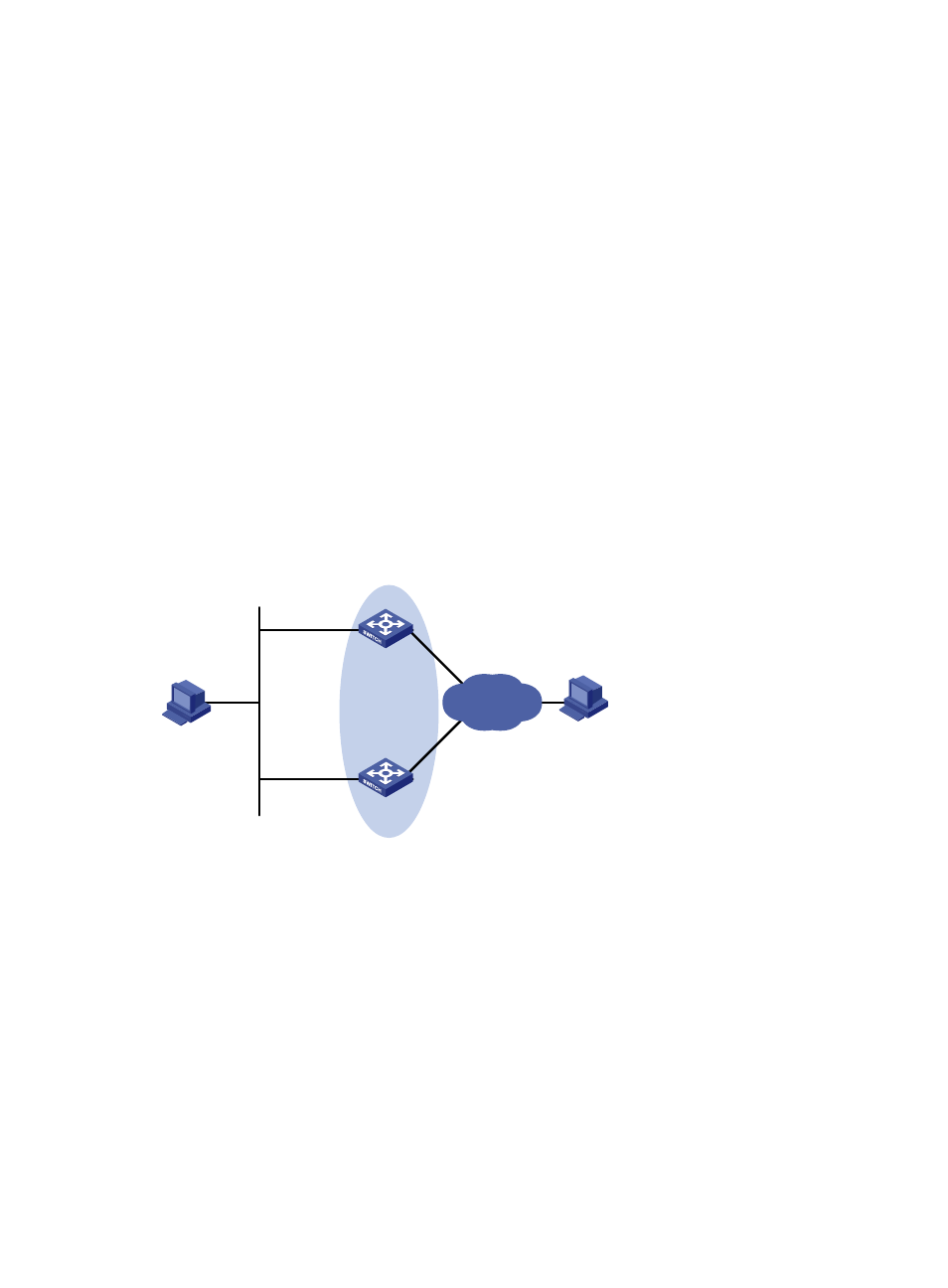Ipv6-based vrrp configuration examples, Single vrrp group configuration example, Network requirements – H3C Technologies H3C S10500 Series Switches User Manual
Page 158: Configuration procedure

149
IPv6-based VRRP configuration examples
This section provides these configuration examples:
•
Single VRRP group configuration example
•
VRRP interface tracking configuration example
•
VRRP with multiple VLANs configuration example
Single VRRP group configuration example
Network requirements
•
Switch A and Switch B belong to VRRP group 1 with the virtual IP addresses of 1::10/64 and
FE80::10.
•
Host A wants to access Host B on the Internet, and learns 1::10/64 as its default gateway through
RA messages sent by the switches.
•
When Switch A operates normally, packets sent from Host A to Host B are forwarded by Switch A;
when Switch A fails, packets sent from Host A to Host B are forwarded by Switch B.
Figure 40 Network diagram for single VRRP group configuration
Host A
Switch A
Switch B
Virtual IPv6 address:
FE80::10
1::10/64
Vlan-int2
FE80::1
1::1/64
Vlan-int2
FE80::2
1::2/64
Host B
Gateway:
1::10/64
Internet
Configuration procedure
1.
Configure Switch A
# Configure VLAN 2.
<SwitchA> system-view
[SwitchA] ipv6
[SwitchA] vlan 2
[SwitchA-vlan2] port gigabitethernet 1/0/5
[SwitchA-vlan2] quit
[SwitchA] interface vlan-interface 2
[SwitchA-Vlan-interface2] ipv6 address fe80::1 link-local
[SwitchA-Vlan-interface2] ipv6 address 1::1 64
# Create a VRRP group 1 and set its virtual IPv6 addresses to FE80::10 and 1::10.
[SwitchA-Vlan-interface2] vrrp ipv6 vrid 1 virtual-ip fe80::10 link-local